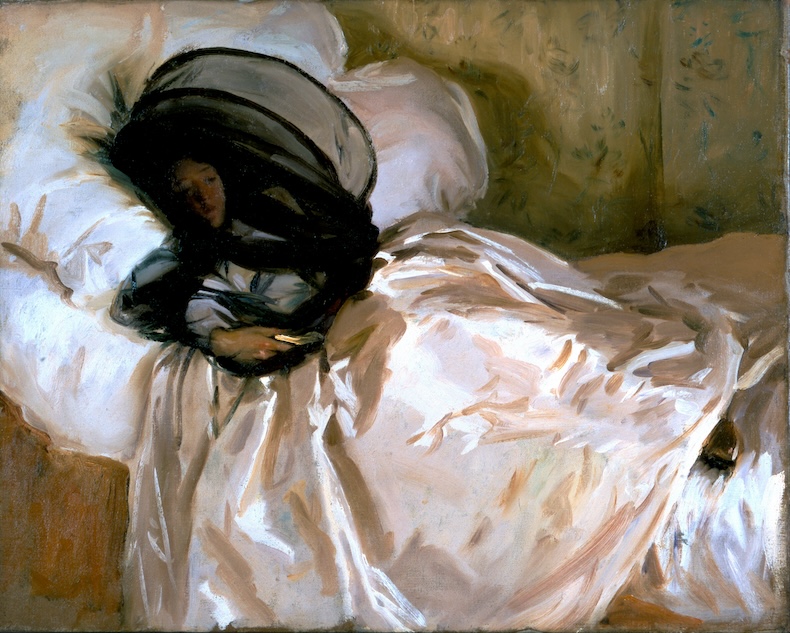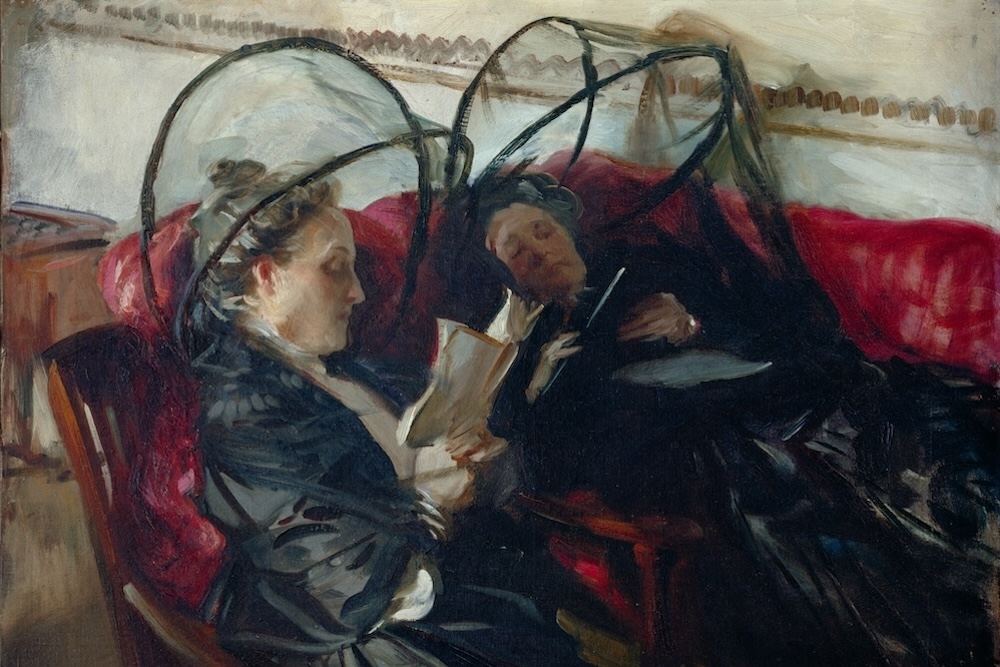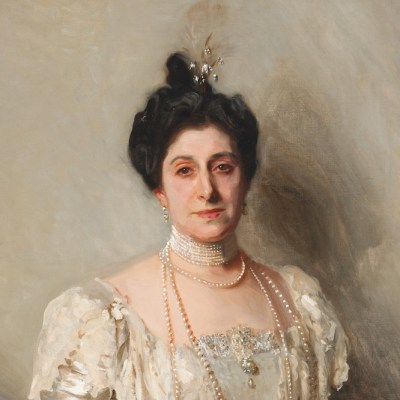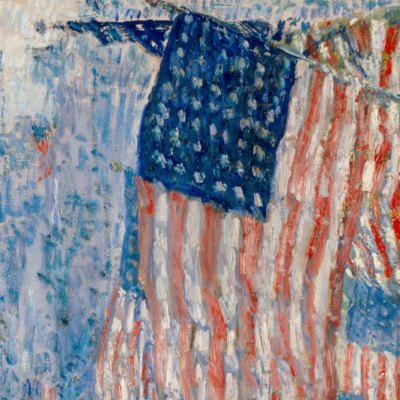Viewers of Paradise, a twisty television series created by Dan Fogelman and starring Sterling K. Brown, may be busy following the turns of the plot, but painting enthusiasts should pause for some of the background details. To put non-viewers in the picture, and without spoiling the revelation at the end of episode one, it is safe to say that all is not well in the United States in a time that seems like now. The idea of James Marsden playing a second-term president is winningly daft; making him answer to a pack of billionaires – and to Julianne Nicholson’s perfectly pant-suited billionaire, in particular – is grimly prescient. Something terrible has happened. What that is, your couchbound correspondent will leave readers to find out for themselves.
In the uneasy world of Paradise there is a library but if there is a museum, it hasn’t appeared by the end of episode six. That doesn’t mean that there’s no art, however, as the low-lit bunker boardroom where the powerbrokers meet has, among other late 19th-century hits, Van Gogh’s Starry Night and some Degas dancers on its walls. Among the paintings in Julianne Nicholson’s office is another Van Gogh. This version of Irises is the one in the Van Gogh Museum in Amsterdam, so has something also happened in Europe, with enough notice to rescue a post-Impressionist or two? Actually, Vermeer’s Girl with a Pearl Earring – a rare Old Master in the series – can also be spotted in the board room, so perhaps the Netherlands is no more. Even if the works are reproductions, and it wouldn’t be out of keeping if they were, their presence tells us something about what this society values or, at least, the art that will feature on its postcards.
Julianne Nicholson’s billionaire powerbroker lays down the law in Paradise. Disney+
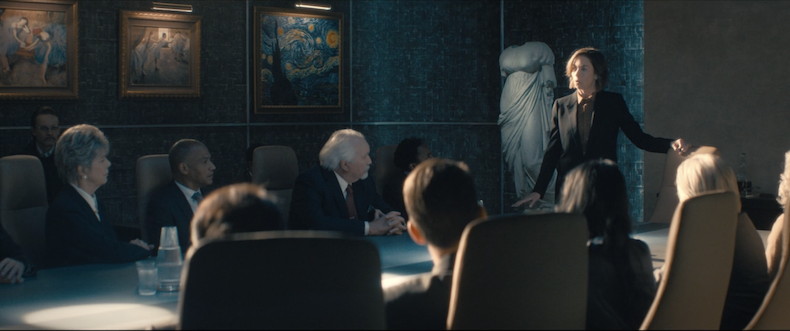
So far, so recognisable, but the painting that has featured more prominently than any of these is more of an outlier. In the sixth and latest episode, a flashback shows us the president stopping before a Sargent in the White House and saying to his lead Secret Service agent (played by Brown): ‘You know, the first time I saw that, I thought what the hell kind of gift was that to the White House: two old women reading books? And then you realise, they’re just passing time, covered by mosquito nets, fooling themselves into thinking there’s anything they can do to protect from the violence of nature.’
Heavy-handed exposition aside – and there’s lots more where that came from – the Sargent is a curious painting. But is it the right curious painting? Mosquito Nets (1908) has been in the collection of the Detroit Institute of Arts since 1993. There is, however, another painting by Sargent called The Mosquito Net (c. 1912), which depicts a young woman lying in bed under said protective gear. This work really is in the White House Collection and has been since 1964. In its description of the two works by Sargent it holds (the other being a portrait of Theodore Roosevelt), the White House Association says, ‘Both are striking, but one of them puzzles visitors perhaps more than any other item in the building.’ The White House Association may also provide a clue to the mix-up in Paradise when it writes: ‘At first glance, visitors often mistake it for a painting of a woman on her death bed; but the painting’s light-hearted tone becomes apparent after careful study.’ Paradise is deeply silly, and enjoyably so, but it would be a stretch to call it light-hearted.
The Mosquito Net (1912), John Singer Sargent. The White House Collection, Washington, D.C.
